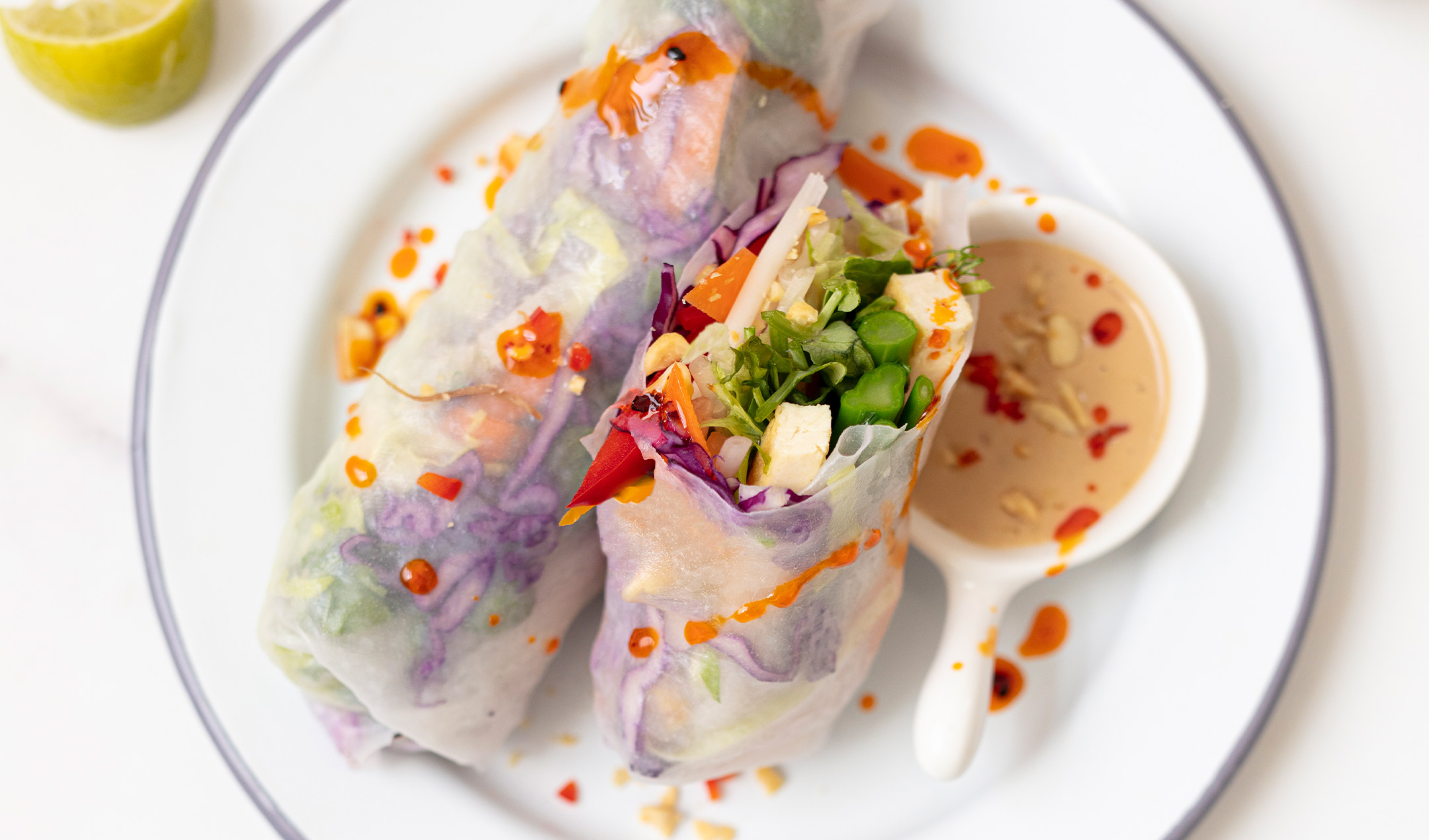Makes 8
adjust servings:
Tick the ingredients you need to add your shopping list.
For the dough:
For the pancake filling:
For the dipping sauce:
- Place the flour into a heatproof bowl and add the boiling water. Stir together with a fork until the flour absorbs the water and some small lumps form.
- When cool enough to handle, transfer to a lightly floured work surface and knead for 5-6 minutes to form a soft, smooth dough, adding a little extra flour if the dough is too sticky. Cover with cling film and set aside to rest at room temperature for 30 minutes.
- Meanwhile, whisk together all of the ingredients for the dipping sauce until the sugar dissolves. Set aside until ready to serve.
- In a bowl, mix together the flour, melted lard, Sichuan pepper and salt.
- On a floured work surface, knead the rested dough again. Divide in two and roll each portion out into a thin rectangle, dusting with flour to prevent sticking.
- Evenly brush the lard mixture over the dough and scatter over the chopped spring onions.
- Working from the shorter ends, roll each piece of dough up into a rope. Cut each one into four equal, short pieces. Stand each piece on end, then roll it out to a pancake about 13-15cm in diameter.
- Heat one tablespoon of vegetable oil in a pan over a high heat, turning the heat to medium once you add the pancakes.
- Working in batches to avoid crowding the pan, cook the pancakes for 6-8 minutes until golden brown and crisp on both sides, flipping frequently and adding an extra splash of vegetable oil when needed.
- Slice into wedges and serve with the dipping sauce.
Nutrition Facts
Per pancake: 310kcals, 18.3g fat (4.4g saturated), 31.5g carbs, 0.9g sugars, 4.6g protein, 1.6g fibre, 0.249g sodium
About this dish
Cōng yóu bǐng, or scallion pancakes in English, are savoury unleavened flatbreads folded with oil and finely chopped spring onions. In China, cōng yóu bǐng can be found both as street food and in restaurants. Unlike the pancakes we know in Western culture, these are made from dough, rather than batter, and they have distinctive layers with a flaky, chewy texture and crisp edges.
DinnerChineseBreakfast & BrunchPancakesPancake TuesdaySpecial OccasionsCuisinesDinner partyBudget meals
Popular in Chinese
 Veggie tofu summer rolls
Veggie tofu summer rolls

